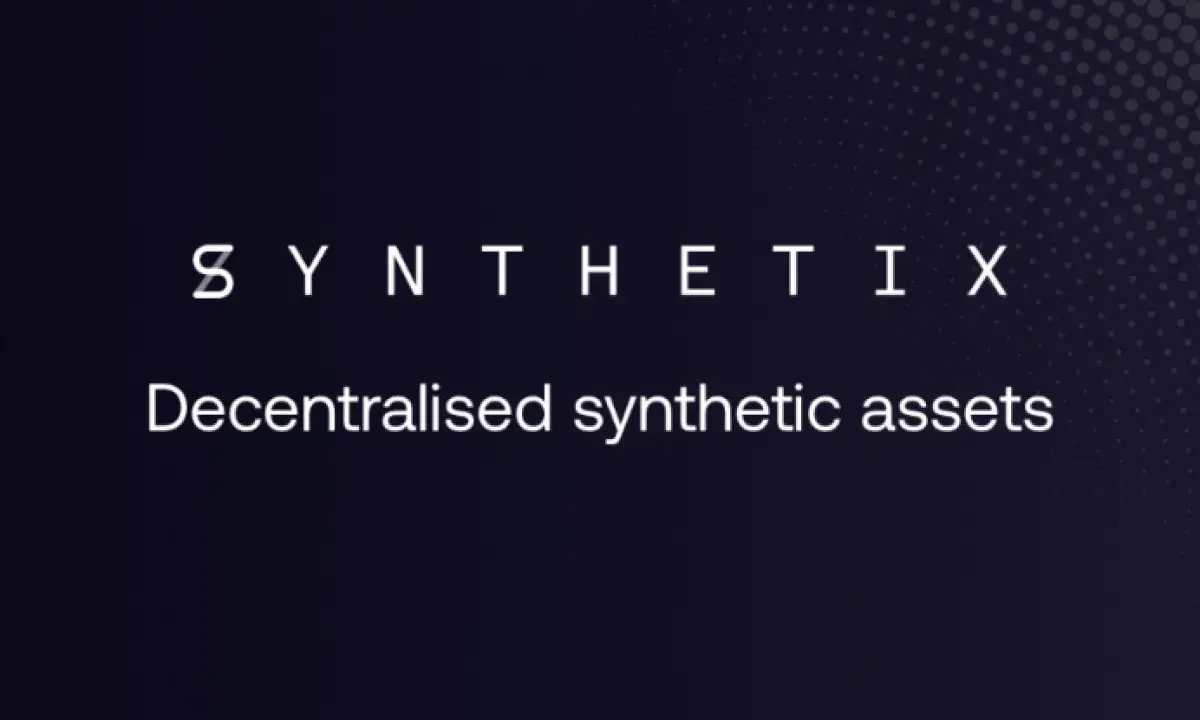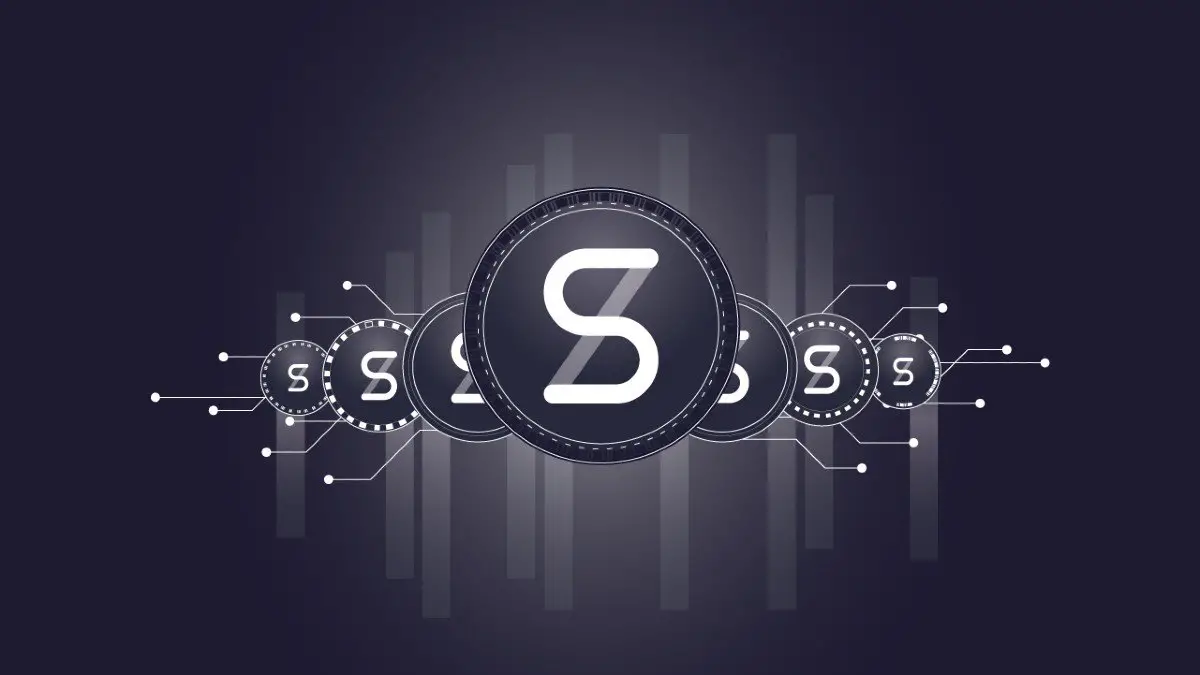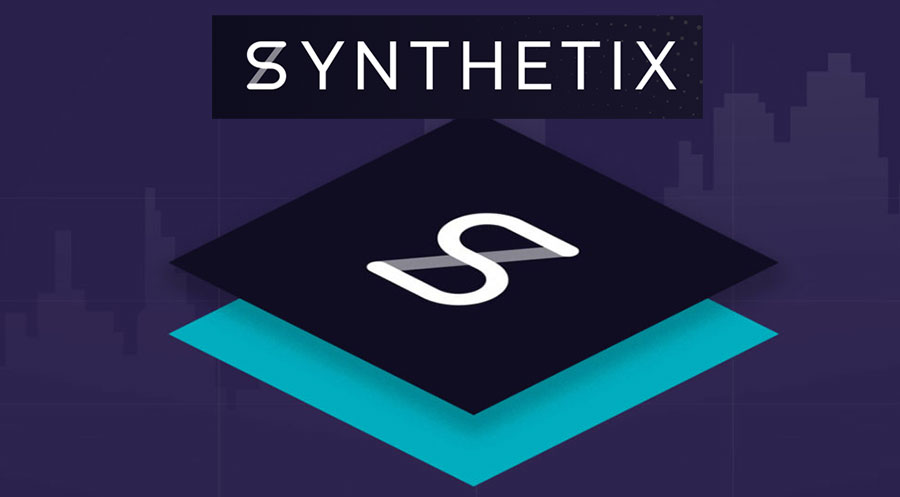Today we are going to explain what Synthetix (SNX) is and how does it work.
What is Synthetix (SNX)?
Synthetix is a protocol based on Ethereum, which allows the issuance of synthetic derivatives. The user who wishes to mint any synthetic derivative, called Synth, must deposit collateral – initially, the protocol would reserve this function for its native SNX token, although later ETH would also be accepted. The market for synthetic derivatives is expected to grow enormously in the Decentralized Finance -DeFi- sector, as they allow exposure to the price action of all types of assets -underlying assets- without the need to purchase them.
One of the characteristics that distinguish Synthetix from other synthetic derivatives issuance protocols is that it does not require the matching of counterparties -third parties that accept the opposite bet being made by the coiner of the asset-, but rather a model of liquidity and shared debt -pooled debt- is applied. This system, therefore, allows direct conversions between Synths without the need for third parties – everything is executed through smart contracts. This eliminates the liquidity and slippage problems that plague many DEXs.

The platform offers a wide variety of synthetic assets that any user can mint by depositing the SNX token as proof of participation (staking). There are currently five categories of synthetic assets available: fiat currencies, commodities, cryptocurrencies, inverse cryptocurrencies, and cryptocurrency indices. Fiat assets include sUSD, sEUR, sKRW among others; commodity assets include synthetic gold and synthetic silver, both measured per ounce; cryptocurrency assets include sBTC, sETH and sBNB, with many more in the works.
There are also inverse assets that inversely plot the price of any of the available cryptocurrencies, meaning that when the price of BTC decreases, the price of iBTC increases. As for indexed cryptocurrency assets there are sDEFI and sCEX (and their inverses), which respectively track a basket of DeFi assets and a basket of tokens on centralized exchanges.
The value of all synthetic assets is currently determined by oracles that enter price feeds on-chain. They use an algorithm with a variety of feeds to determine the aggregate value for each asset. The price feeds are currently supplied by independent node operators from Chainlink and Synthetix, and will soon all be supplied by Chainlink.

SNX holders are incentivized to have their tokens deposited as proof of participation (staking), as they are paid a proportionate share of the commissions generated through activity on the Synthetix Exchange, based on their contribution to the network. It is the right to participate in the network, and capture the commissions generated from the buying and selling of Synths, from which the value of the SNX token is derived.
History of Synthetix (SNX)
In its early days, the project was known as Havven and launched its ICO around February 2018, with an ERC-20 token called HAV. The price of 1 HAV was equal to 0.67 USD.
Havven’s goal was to become a decentralized payment network that would use a dual token system: on the one hand, a stable currency pegged to the dollar – named nUSD – and on the other hand the protocol’s native token – named HAV and acting as collateral. HAV holders were rewarded with a percentage of the commissions generated by all nUSD transactions, the collateral deposited by HAV holders made it possible to maintain a stable nUSD.
Over time, the team realized that its possibilities went far beyond just creating a stable currency. The main rebranding to Synthetix was announced on November 30, 2018 and HAV became SNX.

The founder of the project, Australian Kain Warwick, before founding Synthetix would start Blueshyft – Australia’s largest cryptocurrency payment platform, with tens of millions in transaction volume.
How Synthetix (SNX) works?
The SNX token is the foundation of the Synthetix network, as it acts as collateral to support the creation of any synthetic asset (Synth) on the platform. The minting of Synths by SNX holders is done through the Mintr application.
SNX that are deposited during minting will remain locked in a smart contract, and the user will receive in return one-eighth of the value of their funds in sUSD (e.g. if an amount of SNX valued at $1600 is locked, they will receive 200 sUSD). The optimal collateralization ratio (C-ratio) is 800%, so the user should play an active role in maintaining this ratio. The incentives for holders to deposit and lock their SNX, and mint Synths, are mainly twofold:
- First, each transaction within the Synthetix exchange generates a commission that is sent to a fee pool. These fees are between 10-100 bps (0.1% – 1%, though generally 0.3%), and will be displayed on all trades on the Synthetix exchange. The fees can be claimed later by stakers, depending on the percentage of SNX they have deposited.
- The other incentive for SNX holders to deposit SNX and mint new Synths are the fees for staking SNX, which come from the protocol’s inflationary monetary policy. From March 2019 to August 2023, the total SNX supply will increase from 100,000,000 to 260,263,816, with a weekly decay rate of 1.25% (from December 2019). From September 2023, there will be annual inflation of 2.5% terminal in perpetuity. These SNX tokens are distributed to SNX stakers weekly on a pro-rata basis as long as the collateralization rate does not fall below the optimal threshold.
Commissions are allocated based on the proportion of debt issued by each participant. For example, if a staker issued 1,000 sUSD in debt, the debt pool is 10,000 sUSD and 100 in commissions are generated during a period. The staker is entitled to 10 sUSD because his debt represents 10% of the debt pool. The same proportional distribution mechanism is used for SNX staking rewards.
Currently, there is a 2-week deadline to claim the commissions before they expire. If they are not claimed, they will be transferred to the pool so that they can be distributed in the next period.
The above mechanisms ensure that SNX stakers have incentives to maintain their C-Ratio at the optimal rate (currently 800%). This ensures that Synths are backed with sufficient collateral to absorb significant price shocks. If the value of SNX or Synths fluctuates, each player’s C-Ratio will fluctuate. If it falls below 800% (although there is a small buffer that allows for smaller fluctuations), they will not be able to claim commissions until they reset the ratio. The C-ratio can be adjusted by re-minting Synths in Mintr if the ratio is above 800%, or by burning them if their ratio is below 800%.

On the other hand, if the price of SNX increases, an equivalent portion of a staker’s SNX will be automatically unlocked. For example, if a user locks $100 of SNX as collateral, and the value of SNX doubles, then half of his SNX (total value: $200) will remain locked, while the other half will be unlocked. That extra unlocked can be deposited in staking to mint more sUSD if desired.
SNX stakers incur a “debt” when minting Synths. This debt can increase or decrease regardless of its originally minted value, based on exchange rates and the supply of Synths within the network. For example, if 100% of the Synths in the system were synthetic Bitcoin (sBTC), which halved in price, the debt in the system would be halved, and each participant’s debt would also be halved. This means that in another scenario, where only half of the Synths in the entire system were sBTC, and BTC doubled in price, the total debt in the system, and that of each staker, would increase by a quarter.
Let’s look at a couple of more concrete examples:
- Let’s imagine two users locking a certain amount of SNX in the debt pool. Both participants start by depositing SNX worth 50K sUSD each, so the total debt pool amounts to 100k sUSD, each participant being responsible for a debt of 50k sUSD.
- Participant A purchases sBTC with his sUSD on the Synthetix exchange, while user B keeps his sUSD.
- The price of BTC increases by 50% which means that participant A’s position is now 50% higher, from 50K to 75K, bringing the pool debt to 125K.
- Users A and B are still responsible for 50% of the debt but now for each party, it amounts to 62.5K sUSD. When participant A settles its debt, having 75K sBTC it obtains a gain of 12.5K, while participant B by continuing to have 50K sUSD enters into a loss of 12.5K (since the debt has gone from 50K to 62.5K).
Let’s look at another possible scenario:
- The two users above start over by depositing SNX worth 50k sUSD, which, as before, adds up to a total debt of 100k to be repaid between the two of them in equal 50K shares.
- User A buys sBTC to the value of his 50k sUSD, while user B makes a short by buying iBTC (inverse Bitcoin) for the same value.
- The price of BTC increases by 50% so that user A now has a position valued at 75K, while user B’s short sees his position decrease by 25K, and therefore the sum of the shared debt remains stable at 100K, to be paid between the two equally.
- Therefore, if user A wants to pay off his debt, he is left with a gain of 25K, while participant B enters into a loss of 25K.
Synthetix (SNX) applications
The set of SNX stakers, as we have seen, act as a counterparty to all synthetic derivatives trades (Synths) that occur – meaning that the overall debt incurred by the system will be assumed on a mutualized basis. To protect themselves from that risk, one of the options they have is to take positions external to the system through AMMs such as uniswap or lending protocols such as Aave.
In exchange for the risk taken by minting synthetic derivatives and facilitating their trading on the Synthetix exchange, SNX stakers receive a weekly pro-rata portion of the commissions generated and inflation. It should be noted, however, that when they want to exit their position – i.e., unlock their SNX and leave the system – they must first repay their debt.

In the simplest form: a staker mints 10 sUSD by locking SNX as collateral, and must burn 10 sUSD to unlock it. But if the pool’s debt fluctuates (and, therefore, so does your individual debt) while participating as a staker, you may need to burn more or less debt than you minted at first.
On the other hand, trading on the Synthetix exchange offers many advantages over centralized exchanges and order book-based DEXs. The absence of an order book means that all transactions are executed against the contract, known as “P2C (peer-to-contract) trading”. Assets are assigned an exchange rate via price feeds supplied by an Oracle, and can be converted using the Synthetix Exchange dApp. This provides infinite liquidity up to the full amount of the system’s collateral, zero slippage and permissionless trading on the blockchain. Trading on the Synthetix Exchange, on the other hand, does not require the user to own SNX.
Now, it should be noted that this financial product is not without risk – Synthetix is still an experimental system, and as with all complex systems of this type, exposing them to the potential threats of all real environments, already in production, is the only way to improve their security.
Add to this the fact that the debt incurred by SNX holders in minting synthetic derivatives tends to fluctuate for various reasons; meaning that in order to exit the system and recover the deposited SNX, one might be forced to burn more Synths than were originally minted.
Users of DeFi protocols are generally well aware of these dangers, as well as the fact that the price of most tokens has a high degree of correlation with the market price of BTC and ETH. This means that there are likely to be large fluctuations in the price of SNX for reasons that have little to do with SNX or the Synthetix system itself.

Finally, there are a number of aspects of the system that are currently centralized. One example of centralization is the use of proxy contracts in much of the architecture. According to Synthetix’s litepaper this is done to ensure that the system can be easily upgraded but confers a level of control to the engineering team that requires the trust of the users. While these aspects will be phased out over time, it is important to understand the risks inherent in the current system architecture.
In summary, we could say that Synthetix has created one of the most complex and useful financial products on the Ethereum network to date, although the potential of censorship-resistant synthetic assets is still largely untapped. Future improvements to the mechanisms, as well as functional upgrades will greatly increase the platform’s usefulness.
In the future, it is planned to implement a more advanced order engine in its exchange, leverage, synthetic futures, and new Synths with indices such as the S&P 500, or stocks such as AAPL and TSLA. Finally, the development of a decentralized governance process will also reduce systemic risk and increase the long-term viability of the project.





